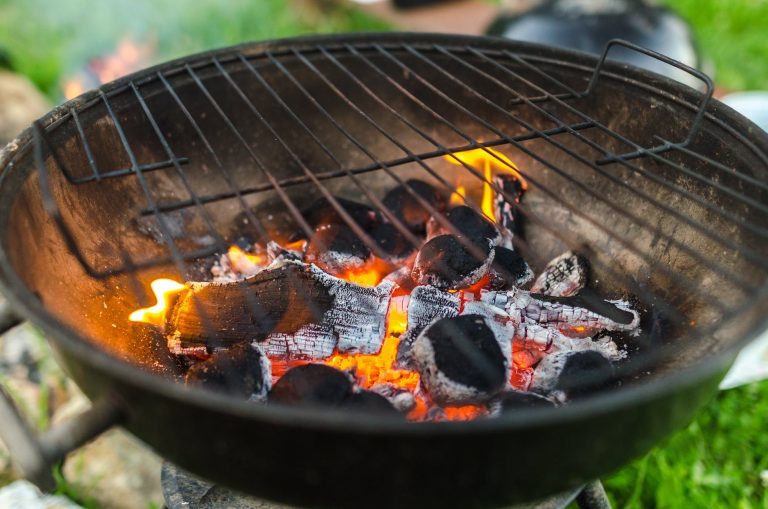A Culinary Journey Across Time and Cultures
Grilling, a popular method of cooking, has been practiced in various forms throughout human history. As we explore the world of strange grilling techniques, we’ll uncover the tantalizing and unusual methods that have been employed across different eras and cultures. From early humans cooking over open fires to modern-day grill masters using sophisticated equipment, grilling techniques have evolved over time. In this article, we will delve into some of the most intriguing and bizarre grilling methods, revealing the history and current usage of these strange grilling techniques.
Ancient Grilling Methods: Clay and Earth Ovens
In ancient civilizations, such as those in Mesopotamia, Egypt, and the Indus Valley, clay and earth ovens were used for grilling. These ovens, known as tandoors, were made from a mixture of clay, straw, and sand, and were fueled by wood or charcoal. Food was placed on skewers and inserted into the tandoor, where the heat from the fire cooked it evenly. Tandoor ovens are still used today, particularly in Indian and Middle Eastern cuisine, for dishes like tandoori chicken and naan bread.
Polynesian Pit Cooking: The Imu
The Imu, a traditional Polynesian pit oven, is used in Hawaiian and other Pacific Islander cultures to cook large quantities of food, particularly for special occasions and communal feasts. The Imu is a large, shallow pit dug into the ground, filled with wood and porous volcanic rocks. Once the wood is burned down and the rocks are heated, a layer of banana leaves or ti leaves is placed over the rocks, followed by the food, which is then covered with additional leaves and finally, a layer of soil to seal in the heat. This slow-cooking technique, which can take up to 12 hours, is still used today for dishes such as Kalua pig and laulau.
Churrasco: South American Open-Fire Grilling
Originating in Brazil and popular throughout South America, churrasco is a grilling method that involves skewering large cuts of meat, typically beef, and cooking them over an open flame. Traditional churrasco grills, known as churrasqueiras, consist of a large, open pit with metal supports for holding the skewers. The meat is seasoned simply with coarse salt and slow-cooked, allowing the open fire to impart a smoky flavor. This technique is still widely used today, particularly in Brazilian steakhouses known as churrascarias.
Yakitori: Japanese Charcoal Grilling
Yakitori, a popular Japanese grilling technique, involves skewering small pieces of chicken and grilling them over binchotan, a type of high-quality, smokeless charcoal made from oak. The skewers are cooked over a narrow, rectangular grill, allowing the chef to control the heat and cook the meat evenly. Yakitori is often seasoned with a simple sauce made from soy sauce, mirin, sake, and sugar. This technique is still widely used in Japan and has gained popularity in other parts of the world as well.
Scandinavian Plank Grilling
Plank grilling, a technique originating from the Nordic countries, involves grilling food on wooden planks, usually made from untreated cedar, oak, or alder. The planks are soaked in water before use, and the food, often fish such as salmon, is placed directly on the wood. The plank is then placed on the grill, and the food cooks as the wood slowly smolders, infusing it with a unique, smoky flavor. Plank grilling is still popular in Scandinavian countries and has been adopted by grill enthusiasts worldwide.
Conclusion
Throughout history, humans have developed various grilling techniques, adapting them to their local environments, resources, and culinary preferences. These strange and unique grilling methods have withstood the test of time, often becoming integral parts of the respective cultures. As we have seen, many of these techniques are still in use today, both in their regions of origin and in other parts of the world where they have been adopted and adapted.
From the ancient clay and earth ovens of Mesopotamia, Egypt, and the Indus Valley to the Polynesian Imu pit and the open-fire grilling traditions of South America, these grilling techniques have shaped the culinary landscape of their respective cultures. In Japan, the delicate art of yakitori grilling showcases the importance of precision and attention to detail, while Scandinavian plank grilling highlights the region’s connection to the natural environment.
As global interest in grilling continues to grow, these techniques are increasingly being embraced by food enthusiasts eager to explore new flavors and cooking methods. By understanding and appreciating the history and cultural significance of these unusual grilling techniques, we can deepen our connection to the food we cook and the people who have been grilling it for centuries. So, the next time you fire up your grill, consider trying one of these fascinating techniques and experience a taste of history and culture from across the ages.
If you’re looking to expand your grilling knowledge and master the art of cooking on a charcoal grill, don’t miss our comprehensive article titled “The Ultimate Guide to Cooking on a Charcoal Grill: Tips, Tricks, and DIY Hacks.” This in-depth guide will provide you with essential techniques, expert advice, and ingenious hacks to help you elevate your charcoal grilling game. Happy grilling!

